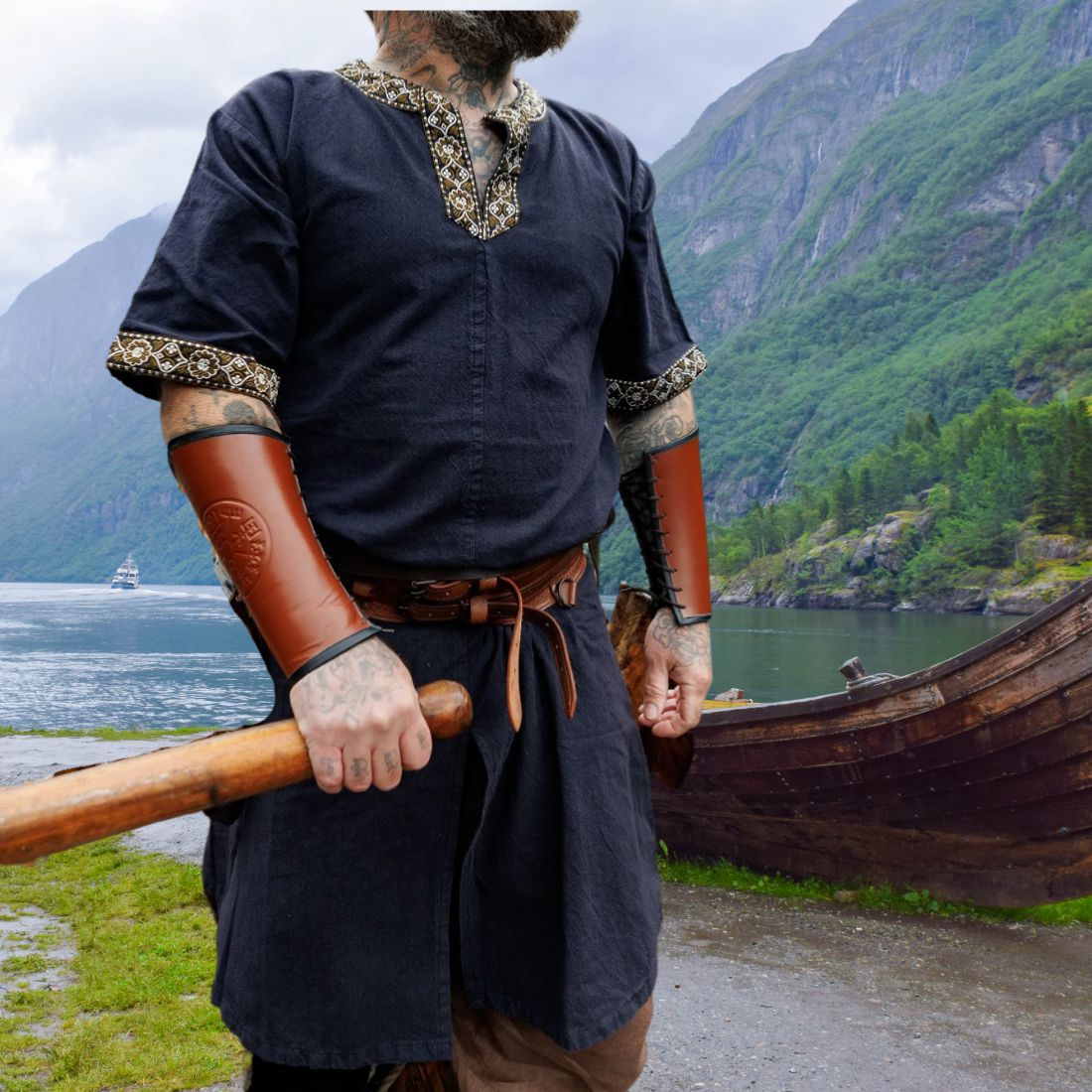Search
Search
Womens Clothing
Wedding & Handfasting
Accessories
Tees & Hoodies
Wedding & Handfasting
Womens Jewelry
Free Shipping on all Jewelry
Tees & Hoodies
Wedding & Handfasting
Contact Us
The Viking era, spanning from late eighth to early eleventh century, was a period marked by remarkable maritime expeditions and ferocious warriors who left an indelible imprint on the tapestry of history. Among the various aspects of their formidable presence, Viking footwear stands as a testament to their ingenious craftsmanship and adaptability to diverse terrains and harsh climates. This blog post delves into the unique design, material, and cultural significance of Viking footwear, enabling a glimpse into the lives of these legendary warriors.
Viking shoes were not merely a fashion statement but an epitome of practical design and durability. Crafted primarily from leather, a material that offered a fine balance between flexibility and durability, their footwear was tailored to meet the demands of their adventurous lifestyle. The construction of Viking shoes illustrates a blend of simplicity and effectiveness. Utilizing a single piece of leather, they were often constructed in a turnshoe design, where the leather was stitched inside out and then turned right side out, creating a comfortable, durable piece of footwear.
The archaeological finds from Viking settlements, particularly from places like York in England and Birka in Sweden, provide a rich tapestry of evidence regarding the variety and sophistication in Viking shoe designs. Some shoes were simple and utilitarian, while others were ornate, bearing intricate designs possibly reflecting the wearer's status and identity within the Viking society.
Moreover, the Vikings were known to adorn their footwear with various decorations including but not limited to embossing, punching, and even the addition of toggles, laces, and straps for better fitting and aesthetic appeal. The variations in the design also indicate a remarkable understanding of the climatic and topographic challenges they faced, adjusting their footwear accordingly to ensure they were well-protected against the elements.
The following table encapsulates a summary of Viking footwear based on archaeological finds and historical records.
| Aspect | Description |
|---|---|
| Material | Predominantly leather, occasionally fur and wool. |
| Design | Turnshoe design, single-piece construction. |
| Decorations | Embossing, punching, toggles, laces, and straps. |
| Regional Variations | Varied design to adapt to different climates and terrains. |
| Cultural Significance | Reflection of status and identity, practicality. |
Moreover, there has been a resurgence of interest in Viking footwear amongst historians, re-enactors, and enthusiasts who find the blend of historicity and functionality appealing. Modern recreations of Viking shoes offer an avenue for individuals to experience a touch of Viking culture and craftsmanship. Various artisans and historical footwear companies have taken up the mantle to recreate these ancient designs with a touch of modern comfort, making Viking footwear not just a relic of the past, but a living tradition.
Furthermore, the study of Viking footwear opens a window into understanding the socio-cultural dynamics of the Viking society. The ornate designs and variations reflect not just a thriving craftsmanship but also a stratified society where footwear could serve as a symbol of status and identity.
In conclusion, the Viking footwear is a remarkable facet of the Viking culture, embodying their spirit of adventure, craftsmanship, and adaptability. Through the lens of their footwear, one can tread the paths of ancient warriors and glimpse the lives of these legendary figures. The blend of historicity and modern recreation of Viking footwear continues to keep the legacy of the Vikings alive, offering a stride into the past for the curious souls.
Viking boots
viking boots mens
viking rubber boots
viking boots usa
viking boots costume
viking boots amazon
viking winter boots
diy viking boots
fur viking boots





